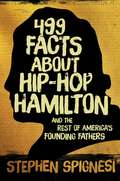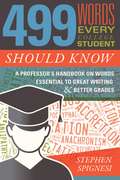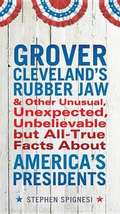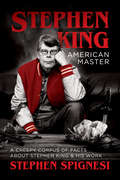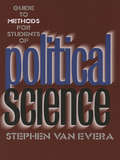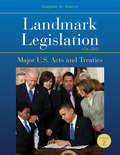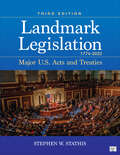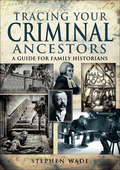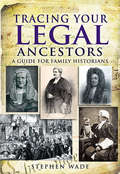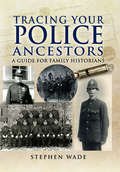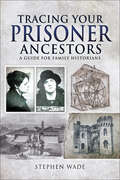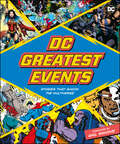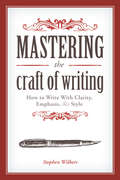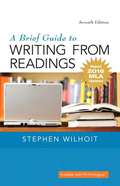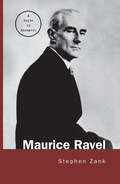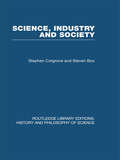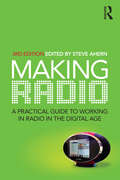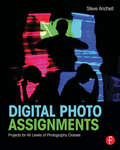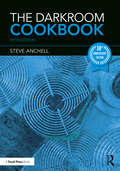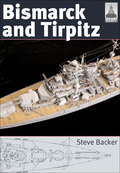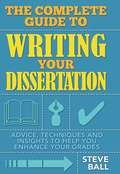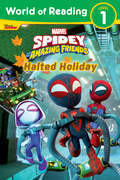- Table View
- List View
499 Facts about Hip-Hop Hamilton and the Rest of America's Founding Fathers: 499 Facts About Hop-Hop Hamilton and America?'s First Leaders
by Stephen SpignesiYou want a revolution? So did Alexander Hamilton and the Founding Fathers!America has fallen in love again with Alexander Hamilton and the Founding Fathers. Here is a popping fresh collection of facts and forgotten trivia surrounding the American Revolution and our forefathers - from those you'd expect (George Washington, Thomas Jefferson, Ben Franklin, and Hamilton, of course) to those you may never have heard of, but you probably should have (who the heck was Rufus King?):Alexander Hamilton was born on foreign soil and became an American hero - the founder of the U.S. Mint and the U.S. Coast Guard. The naval communication book he wrote was still being used by the US Navy and Coast Guard through the Cuban Missile Crisis.Roger Sherman (of Connecticut) was one of only two Founding Fathers who signed the three bulwark documents of our republic: The Declaration of Independence, the Articles of the Confederation, and the Constitution. (Give props to this guy.)By the time he was thirty, George Washington had had smallpox, pleurisy, dysentery, and malaria.Readers will be left with a greater appreciation and deeper respect for these human beings who were just trying to accomplish the incredible: create the greatest nation in history.Skyhorse Publishing, as well as our Arcade imprint, are proud to publish a broad range of books for readers interested in history--books about World War II, the Third Reich, Hitler and his henchmen, the JFK assassination, conspiracies, the American Civil War, the American Revolution, gladiators, Vikings, ancient Rome, medieval times, the old West, and much more. While not every title we publish becomes a New York Times bestseller or a national bestseller, we are committed to books on subjects that are sometimes overlooked and to authors whose work might not otherwise find a home.
499 Words Every College Student Should Know: A Professor's Handbook on Words Essential to Great Writing & Better Grades
by Stephen SpignesiWords equal credibility. The more articulate a person is, the more seriously they will be taken?by everyone.On any given day, you might read ?abrogate” used in a USA Today article; or ?demagogue” or ?fiduciary” used on CNN. You might hear ?ensorcelled” and ?torpor” in a TV drama; you’ll hear a political candidate described as ?truculent.” You may hear ?pedantic” used in a movie. How many of these words are part of most college students’ ?arsenal of words”? Hopefully all of them, but if not, 499 Words Every College Student Should Know will provide them with what they need to become more articulate in their speaking and writing. It will also enhance their comprehension in their reading, ultimately culminating in what every student aspires to: earning better grades!499 Words Every College Student Should Know teaches truly important vocabulary words and focuses on Professor Spignesi’s classroom-tested Trinity of Vocabulary Use. For each word, the vocabulary-enriched and educated student will be able to:Understand the word in their readingUse the word in their speakingMake good use of the word in their writingUsing easy-to-understand, informative, and often humorous explanations of every word, 499 Words Every College Student Should Know also explores how to use the words in sentences, and in proper context. The majority of these words were individually chosen because they are fairly commonplace in media, books, online, and elsewhere, and students need to be able to understand them. Knowing them ? in fact, using the words and making them part of their everyday language ? will make any college student or those soon-to-be, more credible.
Grover Cleveland's Rubber Jaw and other Unusual, Unexpected, Unbelievable but All-True Facts about America's Presidents
by Stephen SpignesiFrom George Washington to Barack Obama, this collection of weird and wild—but true!—facts will show you a whole other side of our nation’s leaders: Andrew Jackson was married to a bigamist. Martin Van Buren wore pistols in the Senate chamber in case things got too rowdy. Franklin Pierce ran over a woman with his horse while in office and was arrested, but was released when the police realized he was the president. James Garfield could simultaneously write Greek with one hand and Latin with the other. Dwight D. Eisenhower’s nickname for his staff driver was “Private Parts. ” Barack Obama can bench press 200 pounds. .
Stephen King, American Master: A Creepy Corpus of Facts About Stephen King & His Work
by Stephen SpignesiFascinating facts, trivia, and little-known details about the Master of the Macabre’s life from the “world’s leading authority on Stephen King” (Entertainment Weekly).New York Times–bestselling author Stephen Spignesi has compiled interviews, essays, and loads of facts and details about all of Stephen King’s work into this fun and informative compendium for the author’s many fans, from the casual to the fanatical!Did you know. . . ? In his early teens, Stephen King sold typed copies of his short stories at school.King originally thought his novel Pet Sematary was too frightening to publish.King’s legendary Dark Tower series took him more than 30 years to write.Thinner was the novel that revealed his “Richard Bachman” pseudonym to the world.King wrote The Eyes of the Dragon for his daughter Naomi.He has never liked Stanley Kubrick’s film version of his novel The Shining.It took him four years to write what some consider his magnum opus, IT.The 2017 film version of IT has grossed more than $700 million worldwide.In addition to novels, King has written essays, plays, screenplays, and even poetry.
The Big Book of UFO Facts, Figures & Truth: A Comprehensive Examination
by William J. Birnes Stephen SpignesiIn a mothership full of entertaining and informative chapters, authors Stephen Spignesi and William Birnes, writers of many books dealing with the intriguing, weird, and unexplained, shed a revealing beam of light on the UFO phenomenon. From inexplicable cattle mutilations and modern astronauts who have seen UFOs, to close encounters of the third and fourth kind, and, it’s all here: The latest on Roswell, and the 1947 crash that has never been explainedThe weirdest (and most convincing) alien abductions—and the medical procedures performed on abducteesThe most commonly-seen UFO shapesA who's who of UFOlogy—including presidents that have seen UFOsUFOs and the Bible20 years of Project Blue Book mysteries—NASA’s official UFO investigationWeirdness galore—Men in Black, crop circles, Bigfoot, the face on Mars, Hollow Earth Theory, alien ancestry, and more!The Big Book of UFO Facts, Figures & Truth is at once a valuable reference and an engrossing guide for all those fascinated with unexplained phenomenon. Turning to any page at random, readers are sure to find new facts and information, as well as dozens of rare, irrefutable photos. In addition, readers will learn how they can access a special website which includes actual video evidence of UFOs. This just may be the most comprehensive UFO guide available.
52 Natural Cleaning Solutions: Recipes for Green Cleaning Products Without Any Pesticides, Carcinogens or Toxic Chemicals
by Stephen TvedtenKill germs—while keeping people and pets safe—with easy-to-make, affordable natural cleaners.Did you know that most common cleaning products are loaded with dozens or hundreds of chemicals known to be toxic according to the EPA? These toxins, carcinogens, and chemicals can wreak havoc on your health, your family’s health, and even your pets’ health.In this book, you’ll discover how to create your own natural green cleaning products simply and easily without spending a lot of money or time. Learn how to harness the power of lemon, boric acid, vinegar, citrus solvent, cornstarch, hydrogen peroxide, isopropyl alcohol, peppermint, castile soap, and many more natural ingredients—to keep your home sparkling while also keeping you and your loved ones safe.
Guide to Methods for Students of Political Science
by Stephen Van EveraStephen Van Evera greeted new graduate students at MIT with a commonsense introduction to qualitative methods in the social sciences. His helpful hints, always warmly received, grew from a handful of memos to an underground classic primer. That primer evolved into a book of how-to information about graduate study, which is essential reading for graduate students and undergraduates in political science, sociology, anthropology, economics, and history--and for their advisers. *How should we frame, assess, and apply theories in the social sciences? "I am unpersuaded by the view that the prime rules of scientific method should differ between hard science and social science. Science is science." *A section on case studies shows novices the ropes. *Van Evera contends the realm of dissertations is often defined too narrowly "Making and testing theories are not the only games in town. . . . If everyone makes and tests theories but no one ever uses them, then what are they for?" *In "Helpful Hints on Writing a Political Science Ph.D. Dissertation," Van Evera focuses on presentation, and on broader issues of academic strategy and tactics. *Van Evera asks how political scientists should work together as a community. "All institutions and professions that face weak accountability need inner ethical rudders that define their obligations in order to stay on course."
Landmark Legislation 1774-2012: Major U.S. Acts and Treaties
by Stephen W. StathisThe Second Edition of this renowned treasure trove of information about the most important laws and treaties enacted by the U.S. Congress now deepens its historical coverage and examines an entire decade of new legislation. Landmark Legislation 1774-2012 includes additional acts and treaties chosen for their historical significance or their precedential importance for later areas of major federal legislative activity in the over 200 years since the convocation of the Continental Congress. Brand new chapters expand coverage to include the last five numbered Congresses (10 years of activity from 2003-2012), which has seen landmark legislation in the areas of health insurance and health care reform; financial regulatory reform; fiscal stimulus and the Temporary Asset Relief Program; federal support for stem cell research; reform of federal financial support for public schools and higher education; and much more. Features & Benefits: Each chapter covers one of the numbered Congresses with a historical essay, followed by the major acts of that Congress arranged in chronological order of passage – with each act summarized. A Finder’s Guide summarizes all of the acts and treaties into approximately 40 separate topical policy areas. The work’s extensive bibliography has been expanded and updated. This one-volume resource is a must-have for any public or academic library, especially those with strong American history or political science collections.
Landmark Legislation 1774-2022: Major U.S. Acts and Treaties
by Stephen W. StathisLandmark Legislation 1774-2022, Third Edition is a comprehensive guide to important laws and treaties enacted by the U.S. Congress. This updated edition includes landmark legislation from the last five Congresses (2013-2022) on issues like climate change, criminal justice, education, and more. It features carefully selected acts and treaties with historical significance and has an updated index and bibliography for easy access. A must-have for public and academic libraries with American history or political science collections.
Landmark Legislation 1774-2022: Major U.S. Acts and Treaties
by Stephen W. StathisLandmark Legislation 1774-2022, Third Edition is a comprehensive guide to important laws and treaties enacted by the U.S. Congress. This updated edition includes landmark legislation from the last five Congresses (2013-2022) on issues like climate change, criminal justice, education, and more. It features carefully selected acts and treaties with historical significance and has an updated index and bibliography for easy access. A must-have for public and academic libraries with American history or political science collections.
Tracing Your Criminal Ancestors: A Guide for Family Historians (Tracing Your Ancestors)
by Stephen WadeDid you have a criminal in the family, an ancestor who was caught on the wrong side of the law? If you have ever had any suspicions about the illicit activities of your relatives, or are fascinated by the history of crime and punishment, this is the book for you. Stephen Wades useful introduction to this fascinating subject will help you discover and investigate the life stories of individuals who had a criminal past. The crimes they committed, the conditions in which they lived, the policing and justice system that dealt with them all these aspects of criminal history are covered as are the many types of crime they were guilty of murder, robbery, fraud, sexual offenses, poaching, protest and public disorder. Graphic case studies featuring each type of crime are included, dating from the Georgian period up until the present day. All of these cases are reconstructed using information gleaned from the many sources available to researchers libraries, archives, books and the internet among them. 'Tracing Your Criminal Ancestors' is essential reading for anyone who wishes to explore the criminal past and seeks to trace an ancestor who had a criminal record.
Tracing Your Legal Ancestors: A Guide for Family Historians (Tracing Your Ancestors)
by Stephen WadeThe law had as much influence on our ancestors as it does on us today, and it occupies an extraordinary range of individuals, from eminent judges and barristers to clerks and minor officials. Yet, despite burgeoning interest in all aspects of history and ancestry, lawyers and legal history have rarely been looked at from the point of view of a family historian. And this is main purpose of Stephen Wades accessible and authoritative introduction to the subject. Assuming that the reader has little prior knowledge of how or where to look for such information, he traces the evolution of the law and the legal professions. He describes the parts played in the system by solicitors, officers of the High Court, registrars, recorders, town clerks, clerks of the peace, proctors, coroners, notaries, parliamentary agents, judges, barristers and magistrates. Also he identifies the various archives, records and books that the family researcher can turn to, and discusses other sources including the internet. Stephen Wades concise account of legal history and research resources will be an invaluable guide for anyone who is studying the subject or seeking an ancestor who was associated with it.
Tracing Your Police Ancestors (Tracing Your Ancestors)
by Stephen WadeTracing Your Police Ancestors will help you locate and research officers who served in any of the police forces of England and Wales from the creation of the Metropolitan Police by Sir Robert Peel in 1829. Assuming that the reader has no prior knowledge of how or where to look for such information, Stephen Wade explains and describes the various archives and records and provides a discussion of other sources. Case studies are used to show how an individual officers career may be traced and understood from this research. He also explains the range of secondary sources open to the family or local historian, many of which offer a broader account of the social and cultural history of the British police forces.
Tracing Your Prisoner Ancestors: A Guide for Family Historians (Tracing Your Ancestors)
by Stephen WadeAn “excellent book . . . a great introduction to legal terms, offences, procedures, sentences, and much more besides” trom the author of Writing True Crime (Ripperologist).The history of the British prison system only had systematic records from the middle of the nineteenth century. Before that, material on prisoners in local jails and houses of correction was patchy and minimal. In more recent times, many prison records have been destroyed.In Tracing Your Prisoner Ancestors, crime historian Stephen Wade attempts to provide information and guidance to family and social history researchers in this difficult area of criminal records. His book covers the span of time from medieval to modern, and includes some Scottish and Irish sources.The sources explained range broadly from central calendars of prisoners, court records and jail returns, through to memoirs and periodicals. The chapters also include case studies and short biographies of some individuals who experienced our prisons and left some records.“All in all, it is a fascinating read, even if you don’t have prisoner ancestors! Wade has managed to explain the complexities of the criminal system, its records and how they affected our ancestors with his well-researched and illuminating guide.” —Family and Community Historical Research Society Newsletter “Overall, it provides an excellent starting point for family historians to investigate their relations who ended up behind bars.” —WDYTYA? Magazine
DC Greatest Events
by Stephen WiacekThe sagas and stories that shook the DC Multiverse.Explore the main events that have shaped and reshaped the DC Multiverse. From the groundbreaking debuts of Superman, Batman, and Wonder Woman to "The Flash of Two Worlds," from Crisis on Infinite Earths to The Death and Return of Superman, and from DC Comics: The New 52 to Infinite Frontier, DC Greatest Events delves into the epic crises, iconic battles, and unforgettable milestones that have reinvented and refreshed DC Comics. Expert essays reveal the context, connections, and consequences of more than 80 pivotal events, showcasing crossover series and timelines, brought to vivid life through stunning artwork and presented in a sumptuous coffee-table format. Across DC Comics' celebrated 80-year history, these are the moments that matter, the stories that made a difference.All DC characters and elements © & ™ DC Comics. (s22)
Mastering the Craft of Writing: How to Write With Clarity, Emphasis, and Style
by Stephen WilbersMake Every Word Memorable! To be remembered for your words, you need to write with skill and style. Whether you're crafting a novel, composing an e-mail, or creating a technical report, Mastering the Craft of Writing presents 52 practical techniques to improve your prose. Spend a week with each technique, or use this book as a go-to reference. Either way, you'll have the tools to enliven your writing and delight your readers. Write with economy: Eliminate wordiness, use strong verbs to drive your sentences, and don't trust modifiers. Write with emphasis: Use punctuation for effect, structure sentences and paragraphs for coherency and flow, and employ repetition to make your point. Write with distinction: Use your imagination to create the unexpected, add a light-hearted touch to your writing, and go beyond clarity to eloquence and grace. With exercises, entertaining asides, and a wealth of useful information, Mastering the Craft of Writing is an invaluable resource for any writer. Once you master these techniques, you'll want to use them in everything you write.
A Brief Guide To Writing From Readings
by Stephen WilhoitA Brief Guide to Writing from Readings is a clear, process-oriented guide to academic writing. The guide covers the subtleties of rhetorical analysis and argumentation strategies as well as the technical aspects of writing with sources. Students will learn first to examine texts critically and then to clearly, accurately and creatively respond in essay form. In-text tools including summary charts and revision checklists help students tackle source-based essays step by step. Instructors will rely on the guide as a one-stop reference tool; students can apply their learning to any discipline, whether for class work or independent study. <p><p> In the Seventh Edition, in response to student and faculty feedback, Wilhoit includes a new chapter on analyzing readings and composing analytical essays; more coverage of literary analysis and a new short story; eight academic readings; and expanded coverage of how to cite electronic sources in APA and MLA style.
Maurice Ravel: A Guide to Research (Routledge Music Bibliographies)
by Stephen ZankMaurice Ravel: A Research and Information Guide is an annotated bibliography concerning both the nature of primary sources related to the composer and the scope and significance of the secondary sources which deal with him, his compositions, and his influence as a composer and theorist.
Science Industry and Society: Studies in the Sociology of Science (Routledge Library Editions: History & Philosophy of Science)
by Stephen and Cotgrove & BoxOriginally published in 1970. Two major changes have characterised science in the twentieth century. Firstly, there has been its rapid growth. Secondly, and central to the theme his book – science is no longer mainly an academic activity carried on in universities. Industry will soon be the largest employer of scientists. This book deals with issues of bureaucracy in science threatening its creativity and the failure of industry to recruit the best graduates, as well as what attracts people to study science.
Making Radio: A practical guide to working in radio in the digital age
by Steve Ahern'The distilled wisdom and passion of top practitioners makes this an invaluable guide to making radio in Australia.' - Siobhan McHugh, award-winning radio feature producer and lecturer, University of Wollongong'a very useful hands-on guide to radio production in Australia' - Gail Phillips, Associate Professor of Journalism, Murdoch University'Making Radio has been a core text for all our radio courses since it was written. It covers everything form the basics you need to know when you begin your radio career, to high level skills required for career advancement.' - Kim Becherand, AFTRS Radio DivisionMaking radio programs gets into your blood: it's one of the most stimulating jobs in the world, in a fast-moving industry, at the cutting edge of digital technology.Making Radio is a practical guide for anyone who wants to learn how to make good radio in the era of Radio 2.0. It examines the key roles in radio: announcing, presenting, research, copywriting, producing, marketing and promotions. It also outlines what is involved in creating different types of radio programs: news and current affairs, music, talkback, comedy and WC features, as well as legal and regulatory constraints.With contributions from industry experts, the third edition reflects the impact of digital radio, including multi-platform delivery, listener databases, social media and online marketing. It also examines how radio stations have reinvented their business models to accommodate the rapid changes in communications and listener expectations.
Digital Photo Assignments: Projects for All Levels of Photography Classes (Photography Educators Series)
by Steve AnchellThis collection of more than 40 photo assignments is designed to help all students—from beginning freshmen to experienced seniors—improve or reinvigorate their work and reach their full potential as photographers. Whether you are building a syllabus for your first photography class, revitalizing assignments for your students, or looking to add DSLR video, workflow, or color correction to your class, you will find a wealth of ideas in this wonderful working guide. The assignments begin with using the camera, and progress through learning composition and lighting, working in genres, building a portfolio and more.
The Darkroom Cookbook
by Steve AnchellThe fifth edition of this comprehensive guide to darkroom photography is fully revised and updated, placing analog and traditional methods into the context of a digital world and contemporary workflows.Including invaluable analog photography techniques, chemicals, and equipment, supported by visual examples. The DCB5 has 180 updated recipes for darkroom experiments, and tips for mastering the darkroom. It includes the chemicals used to develop, stop, fix, tone, and archivally process films and prints. DCB5 contains invaluable information on making enlarged digital negatives, planning a darkroom, and safely handling photographic chemicals. It features new sections on split-printing, solarization, and making your own gelatin emulsion. The fifth edition includes contributions and stunning black-and-white imagery by established artists such as Bruce Barnbaum, Tim Rudman, Christina Z. Anderson, John Sexton, and more.This is the essential guide for any practitioner who wants to take the next step to develop a thorough understanding of film and darkroom processes, techniques, and working methodologies, as well as graduate and advanced photography students with an interest in analog and darkroom processes.
Bismarck and Tirpitz: Bismarck And Tirpitz (Shipcraft Ser. #Vol. 10)
by Steve BackerA treasury of useful facts, plans, and photos for modelers. The ShipCraft series provides in-depth information about building and modifying model kits of famous warship types. Lavishly illustrated, each book takes the modeler through a brief history of the subject class, highlighting differences between sister-ships and changes in their appearance over their careers. This includes paint schemes and camouflage, featuring color profiles and highly detailed line drawings and scale plans. The modeling section reviews the strengths and weaknesses of available kits, lists commercial accessory sets for super-detailing of the ships, and provides hints on modifying and improving the basic kit. This is followed by an extensive photographic gallery of selected high-quality models in a variety of scales, and the book concludes with a section on research references—books, monographs, large-scale plans, and relevant websites. This volume covers the famous German sister-ships whose fates were so very different—Bismarck had a short but glorious career, first sinking HMS Hood and then in turn being sunk by the Home Fleet, whereas the Tirpitz spent most of the war skulking in Norwegian fjords, fending off attacks by midget submarines and carrier aircraft before being finally sunk by enormous, specially designed bombs dropped by RAF Lancasters.
The Complete Guide To Writing Your Dissertation: Advice, techniques and insights to help you enhance your grades
by Steve BallIf you are studying at undergraduate or masters level it's likely that you will have to write a dissertation, critical essay or project report before you can graduate. Unfortunately, many good pieces of student research and inquiry are devalued - and sometimes even fail - because they are badly planned, structured or written. Make all that hard work count! This new guide looks directly at the processes, techniques and objectives of writing the dissertation itself. It covers longer term aspects - such as planning, scheduling, structuring - and more immediate ones - such as style, detail and managing the length. - Learn how to understand and decode the academic language of research questions, learning outcomes, objectives and assessment criteria, and translate them into the right form of words. - Discover how to maintain that essential focus on your objectives and research question or hypothesis, and their connection to your discussion and eventual conclusions. - Develop a schedule, identifying the tasks and milestones that will keep you on track, and update the plan as you go. - Find a style and structure that will help shape your writing to satisfy the examiners. - Manage the overall length and chapter lengths, and learn how to cut excess content and avoid repetition. - Master the technicalities of dissertation writing, such as methodologies, literature reviews, note systems, referencing...- Learn to how to transform an adequate dissertation into a good one by attending to fluency and detail - grammar, accuracy, consistency, punctuation - and the controlled use of aids such as spellcheckers and style checkers. - Avoid plagiarism and other evils. How can you avoid falling into cheating, either by accident or by carelessness under pressure? With examples and self-checking exercises to help you to stay on the right track, this essential guide will also serve as a valuable aid to all types of academic writing.
World of Reading: Spidey and His Amazing Friends: Halted Holiday (World of Reading)
by Steve BehlingTeam Spidey works together to clear up traffic in this 32-page level 1 reader that relives the excitement of Spidey and His Amazing Friends holiday episode.When Miles' abuela gets stuck in the tunnel on her way to Thanksgiving dinner, Team Spidey swings into action to unblock the roads so families can be together for this traditional holiday meal. Super Hero fans can&’t miss this heartfelt 32-page story featuring Spidey and his amazing friends. With familiar words, simple sentence structures, and clear illustrations, Spidey&’s latest adventure is perfect for beginning readers. Explore Disney's World of Reading series, which provides emerging readers with books that inspire and excite them, featuring characters they love. Each level is designed to help readers navigate the wonderful world of reading at just the right pace.Read about more of Team Spidey's amazing adventures in these books!Spidey and His Amazing Friends: Construction DestructionSpidey and His Amazing Friends: Team Spidey Does it All! Comic ReaderSpidey and His Amazing Friends: Panther PatienceSpidey and His Amazing Friends: Meet Team SpideyWorld of Reading: Spidey Saves the DayWorld of Reading: Super Hero Hiccups
